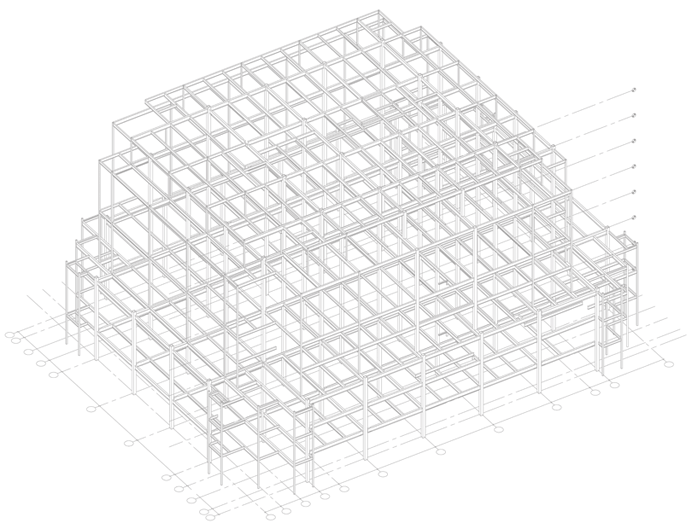Existing buildings must be properly evaluated to accommodate the needs of a tenant and determine their true performance when subjected to future seismic loading. An accurate assessment of the structure is required, then prudent modifications can be developed to meet the client’s goals. Whether it is a new building or an existing facility, education and cultural facilities require special spaces. Working closely with the architect, structural engineers must accommodate those needs while recognizing students’ and patrons’ safety needs and sensitivity to community needs. We provided evaluation and design services for many private schools, colleges, universities, museums, and community centers. As part of our spectrum of services, Structural Focus provides design and engineering for new buildings. This process requires an understanding of the client’s vision and needs as they correspond to the structural and seismic requirements of the project. Structural Focus strives to find the best solutions, both in terms of design feasibility and budget, on every project. Clients appreciate our extensive experience working on projects incorporating unique acoustical requirements. This expertise also extends to the design of performance spaces and movie theaters. Existing buildings must be properly evaluated to determine their true performance when subjected to future seismic loading. An accurate assessment of the existing structure is required, then prudent modifications can be developed to meet the client’s goals. Structural Focus is highly recognized for their work on historic buildings. Our expert understanding and appreciation of archaic construction materials, as well as our experience with the Historical Building Code and the Secretary of the Interior’s Standards, make us uniquely qualified. Our team has rehabilitated hundreds of existing buildings, including nearly two dozen on the National Register of Historic Places. Single family homes are very personal and important to their owners. While owners may not always completely understand the design and construction process, the team must recognize the owner’s needs and guide them. Changes should be expected and flexibility is key. Structural Focus has collaborated on multiple projects with notable architects including KAA Design Group, Marmol Radziner Architecture, Kelly Sutherlin McLeod Architecture, Peter Marino Architect, and Landry Design Group, among many others. Structural Focus uses the latest technologies to provide expert services to clients, such as corporations, lenders, and realtors, during the site selection process and produces seismic risk assessments for the purchase and/or refinancing of existing buildings. The Accelerated Building Re-occupancy (ABR) Program allows building owners to retain qualified structural engineers to create building-specific post-disaster inspection plans. The engineers are ready and “on call” to inspect the identified buildings following an earthquake or other disaster. ABR Programs promote occupants’ safety, reduces business interruption, and supports our communities’ resilience. SAFEq Institute™ is an expert resource for local jurisdictions seeking to minimize facility and business interruption losses caused by disasters. SAFEq Institute provides organizational assistance as well as training of individuals to provide emergency structural inspection and evaluation of buildings and other structures affected by disasters such as earthquakes. Structural Focus recognizes the importance of sustainability and has pledged to join and financially support SE 2050. The SE 2050 Commitment Program is a collective effort by the structural engineering profession to understand, reduce, and ultimately eliminate embodied carbon in our projects by 2050. The mission of the SE 2050 Commitment is to support the SE 2050 Challenge and transform the practice of structural engineering in a way that is holistic, firm-wide, project based, and data-driven. By prioritizing reduction of embodied carbon, through the use of less and/or less impactful structural materials, participating firms can more easily work toward net zero embodied carbon structural systems by 2050.
Services
Providing design input early in the process can impact a building’s construction cost and performance. A new building’s configuration is the single most important factor leading to a successful project. Tenant Improvements
Educational & Cultural Facilities
Ground Up Design
Media & Technology
Seismic Evaluation & Retrofit
Historic Preservation & Restoration
Custom Residential
Structural Due Diligence Studies
Planning for Post-Disaster: ABR for Building Owners
Planning for Post-Disaster: Local Jurisdictions
Need our help?


